DevOps Team Structure and Best Practice
Do you want to know what DevOps structure will work for your business and what will not?
Here you can read about the benefits of each DevOps structure pattern and get some insights on their peculiarities and efficiency.
The things you should by all means take into consideration are your company’s size, structure, and business needs.

Table of Contents
DevOps practices come and go as they are put to a test against real-life scenarios. Some prove to be viable, others just don’t bring the results we expect. In this post, we’ll take a closer look at the most popular and effective DevOps team structure best practices, so that you can better understand what’s working or not.
Table of Contents
DevOps Structure 1: DevOps Inside the Organization
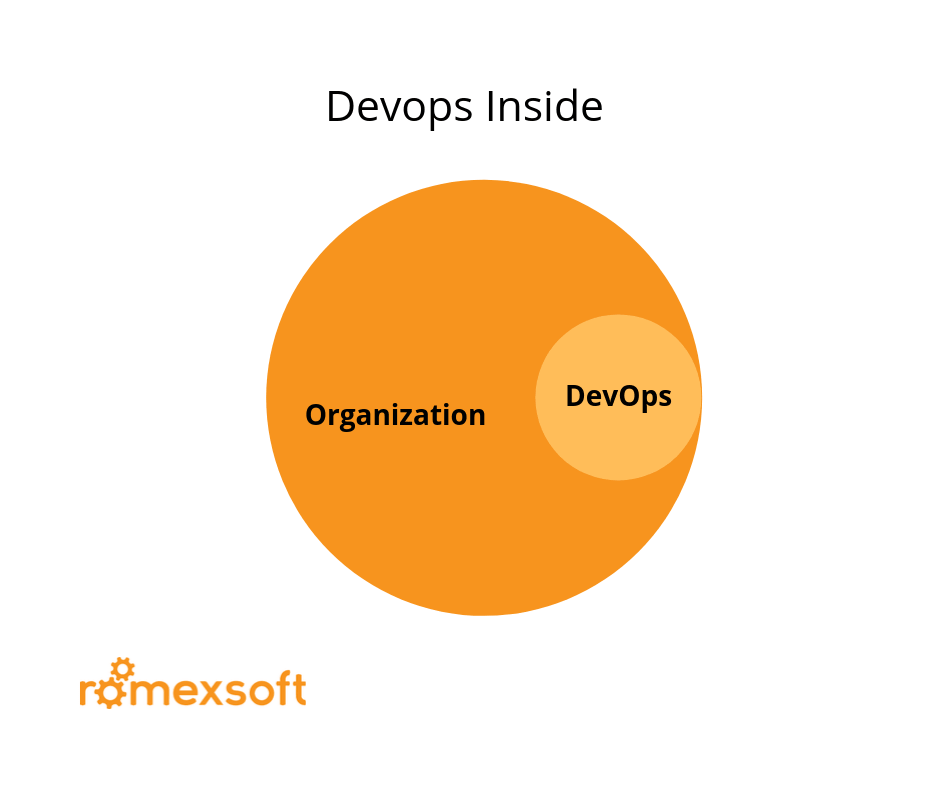
Best suited for: small to mid-sized organizations with a dedicated IT department
Efficiency: Medium
This is the most common DevOp structure for SMBs. As it often start with this structure and evolve further with the support of DevOps consulting to scale efficiently. It assumes putting one or several DevOps engineers in charge of all the operations and deployment processes. The main drawback here is a possible decrease in software quality during the implementation of new changes. This often leads to additional re-work from developers.
DevOps Organization Structure 2: Dev and Ops Collaboration
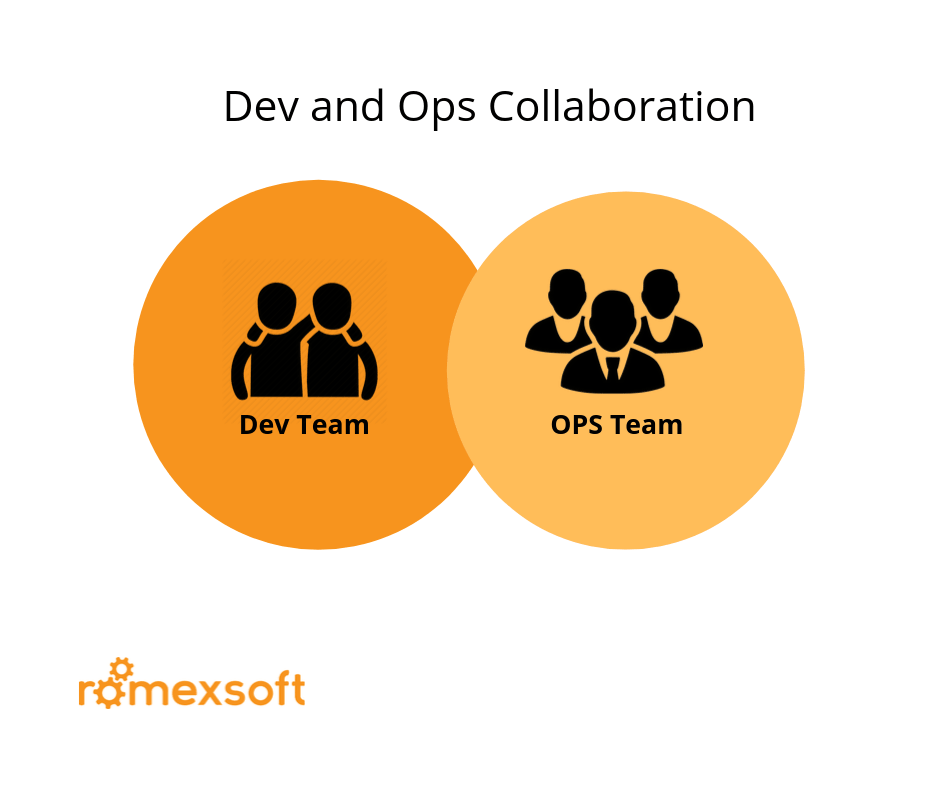
Best suited for: organizations with a strong tech core
Efficiency: High
Dev and Ops Collaboration is one of the most common team structures and best practices in DevOps. TThe key here is to ensure fast and effective collaboration between Dev- and Ops-teams guided by a strong DevOps culture and mindset. Depending on your needs, you can switch between using only one specialized team or using two teams together. This approach also accommodates having several separate Dev-teams that can work in parallel on partially independent products.
Dev and Ops have separate, clear functions and effectively collaborate with one another. This means that Ops specialists should feel comfortable working closely with Dev counterparts on issues related to development. Whereas Dev teams should also have a clear understanding of the needs and challenges of the operational teams, mainly those related to deployment.
As well, Ops will be responsible for generating and cultivating new solutions, aimed at reducing the development and deployment times and pass on that information to Devs.
DevOps Structure 3: Dev and Ops Together – the Best Team Structure for IT DevOps
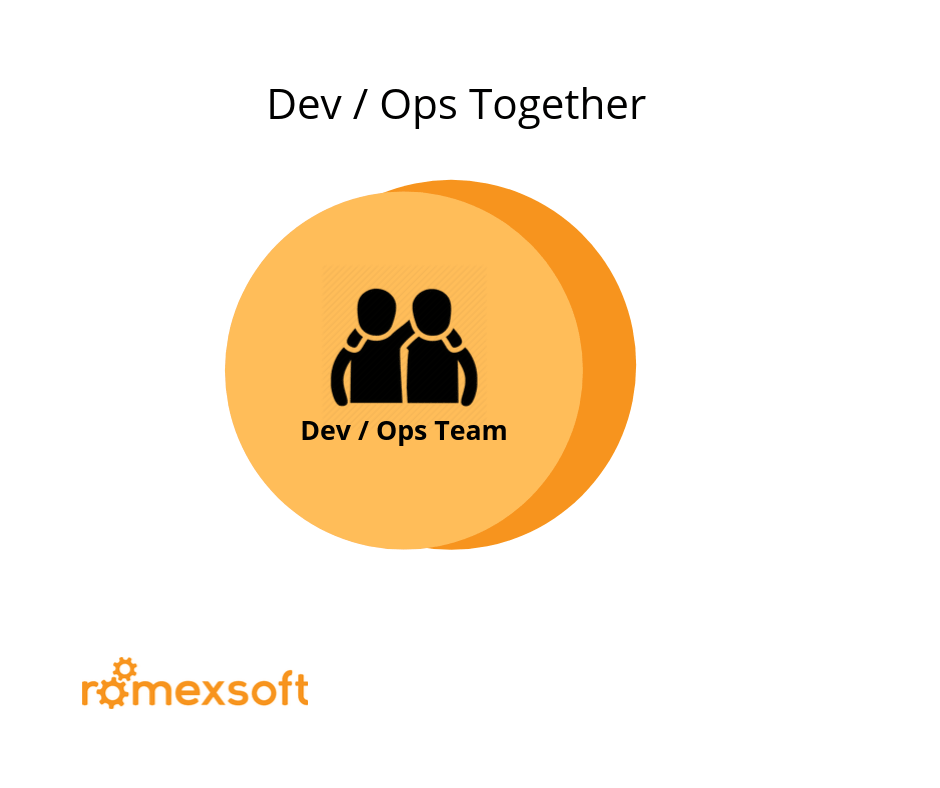
Best suited for: organizations with one digital product
Efficiency: High
This team structure assumes a tight integration between the Dev and Ops teams. They act as a united front, with shared goals and unified product vision. Either of the teams does not have separate functions. Everyone’s working together to reach a shared goal. Sometimes, this practice is also called “NoOps” as it does not assume having a segregated and visible Ops-team.
Netflix and Facebook – companies developing one digital product – are prime examples of companies using and succeeding with this DevOps practice.
DevOps Organization Structure 4: Ops as IaaS (Infrastructure as a Service)
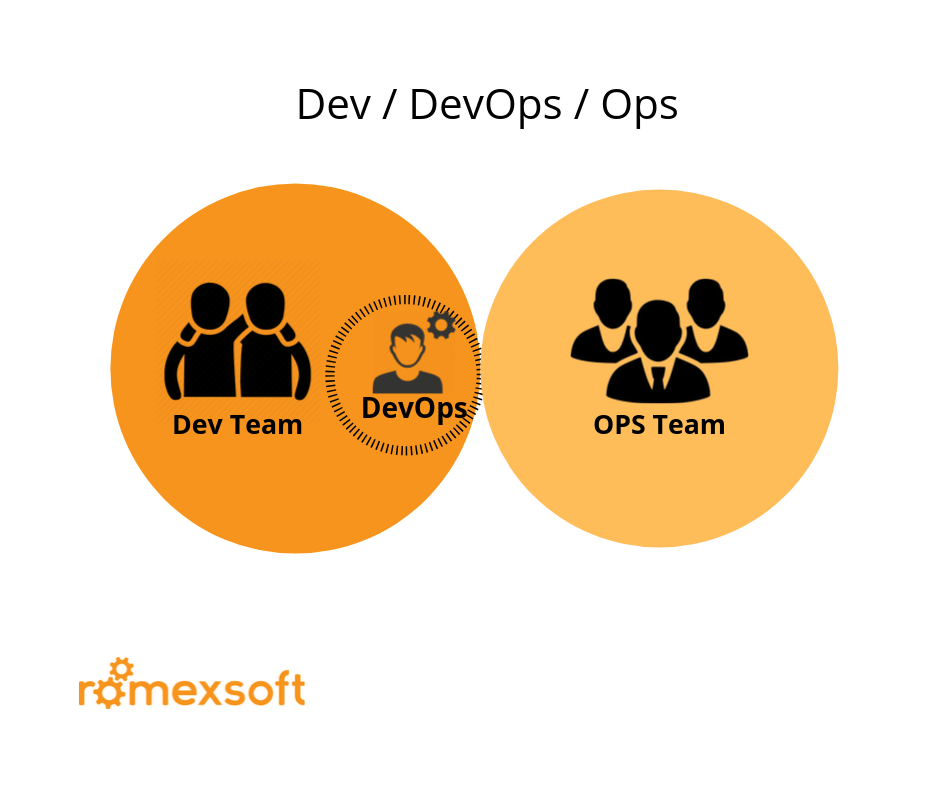
Best suited for: organizations with several different products and services, who already have an established IT Ops department; companies using cloud services.
Efficiency: Medium
Ops as IaaS works best for “cloud-ready” companies using AWS (Amazon Web Services), Azure or another cloud services provider.
As well, it’s a good approach for organizations with a traditional IT Ops department – one that cannot be completely transformed or replaced fast enough. In this case, an Ops-team acts like Amazon EC2 – a web service that enables the creation of scalable virtual services (instances), along with resizable compute capacity in the cloud.
In this case, we have a separate “DevOps” team (possibly virtual) operating inside the Dev department. This entity is directly responsible for the following tasks:
Operational features and metrics
Monitoring
Resources provisioning
Handling communications with an IaaS team (optional).
DevOps Structure 5: DevOps as an External Service
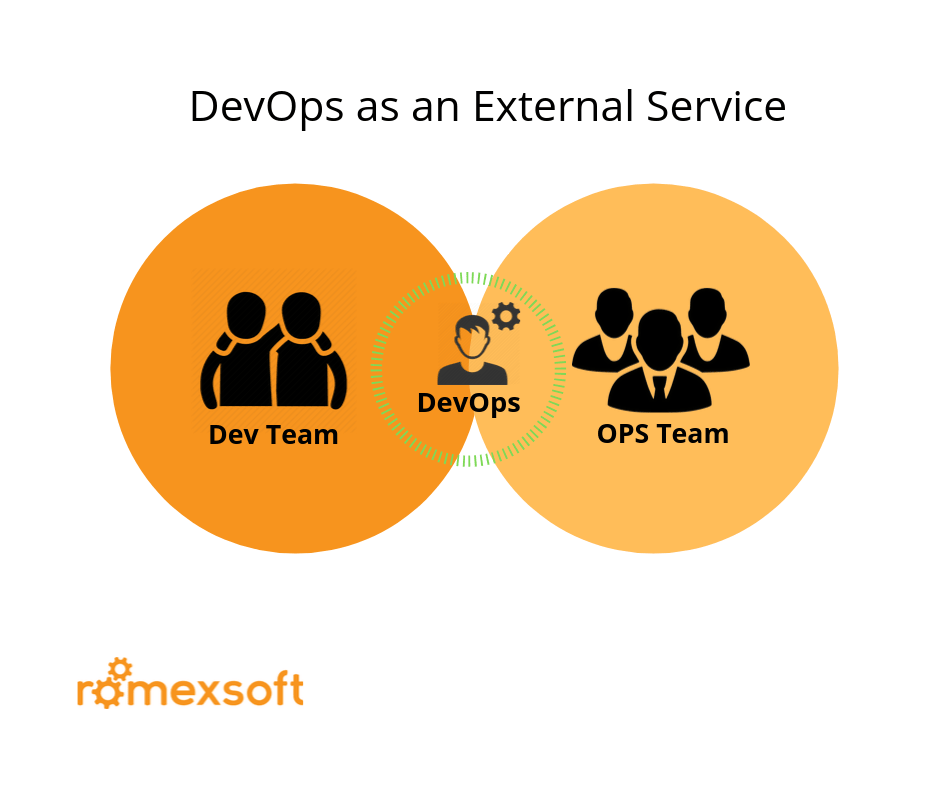
Best suited for: small teams and organizations with limited experience in IT operations
Efficiency: Medium
Hiring external DevOps consultants may be useful for smaller companies who want to get a better grasp of the latest best practices in automation, monitoring and configuration management without hiring in-house expertise. Engaging with a reputable DevOps services provider makes perfect sense in this case.
In the future, such organizations will likely move on and adopt structure 1 or structure 3.
DevOps Department Structure 6: DevOps / SRE (Google model)
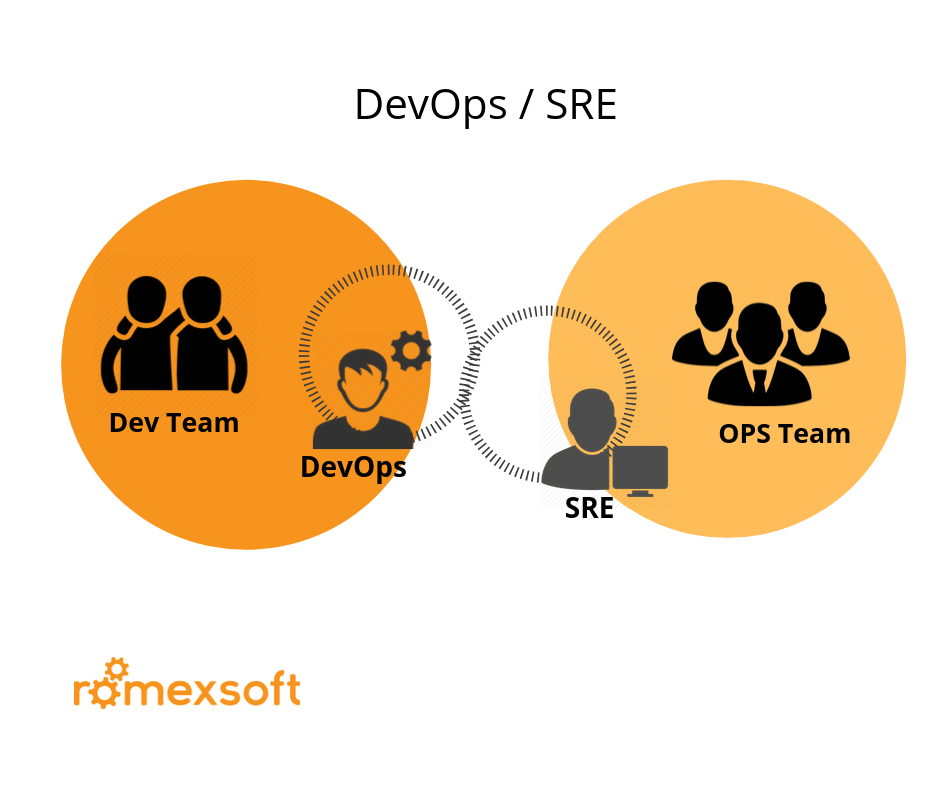
Best suited for: organizations with mature operations and development culture
Efficiency: High
Some companies (including Google) use a custom model that assumes having a certain practice for transferring software from Dev to an additional team, responsible for further operations called SRE (Site Reliability Engineering).
Under this scenario, SRE team will require development teams to collect and provide relevant logs/metrics, demonstrating that the produced software is robust and up-to-specs.
More read: DevOps Trends 2019
The key here is that an SRE-team can bounce back software that does not meet its standards, and provide feedback on what should be fixed before the product can move further down the cycle, towards operations. The collaboration between Dev and SRE teams is based on operational metrics.
Only when an SRE-team approves certain changes and development modules, the product can move on to Operations. SRE acts as a “gatekeeper” to ensure top quality standards. In other words, any change is vetted by SRE-team, and only after they are satisfied with the quality, the software moves on to Ops-team, who’s responsible for deployments.
How Romexsoft Can Help You?
If you are looking to transform your organization’s software development practices, consider our DevOps consulting services. Our AWS-certified DevOps engineers are ready to assist you in effectively developing, automating, deploying, and launching your product on AWS. By partnering with us, you’ll benefit from 24/7 DevOps Support, comprehensive staff training, and adherence to the latest industry best practices.
Contact us today to schedule a free consulting session!




